Each week we’ll uncover some unusual and (hopefully) interesting facts about the city. This week we take on the second incarnation of the Hotel Vancouver.
1. It had to big and beautiful
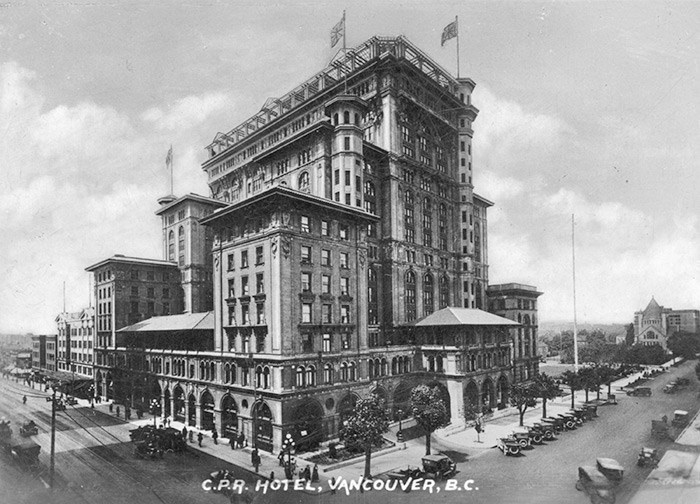 Hotel Vancouver, 1917. Photo: Vancouver Archives Item: CVA 677-21
Hotel Vancouver, 1917. Photo: Vancouver Archives Item: CVA 677-21
With the first Hotel Vancouver being referred to as a “monument of external ugliness” by local paper, The Ledge, The CPR made sure the second Hotel Vancouver would stand as one of the city's finest buildings. Built in the Italian Renaissance style and designed by Francis S. Swales, the Hotel Vancouver opened as one of the British Empire’s grandest hotels.
2. It was the most expensive building in the city
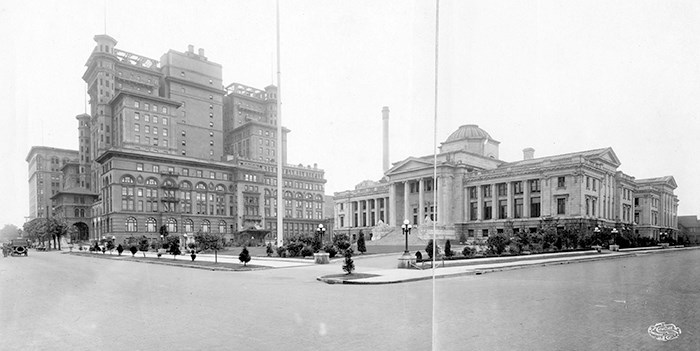 Hotel Vancouver and City Hall. Photo: Vancouver Archives Item: CVA 371-884.
Hotel Vancouver and City Hall. Photo: Vancouver Archives Item: CVA 371-884.
The Hotel Vancouver had 700 rooms, turrets, a roof top garden, gargoyles and an absolutely lavish interior, which included marble sinks and gold-plated hardware. Other luxurious design elements included eight-foot tall terra cotta moose and buffalo head sculptures. It's estimated that constructions costs surpassed $3,000,000.
2. The hotel attracted celebrity figures from around the world
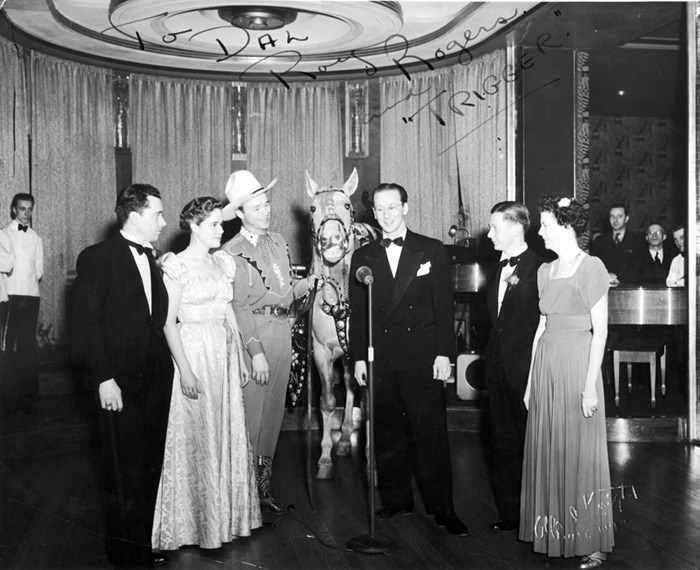 Dal Richards with Roy Rogers at the Panorama Roof, 1940. Photo/Vancouver Archives.
Dal Richards with Roy Rogers at the Panorama Roof, 1940. Photo/Vancouver Archives.
A favourite place for a night out. Famous hotel guests include Winston Churchill, Babe Ruth, and Anna Pavlova. The hotel's Panorama Roof was adored by locals and celebrities alike.
4. The third Hotel Vancouver was built by the CPR's main competition
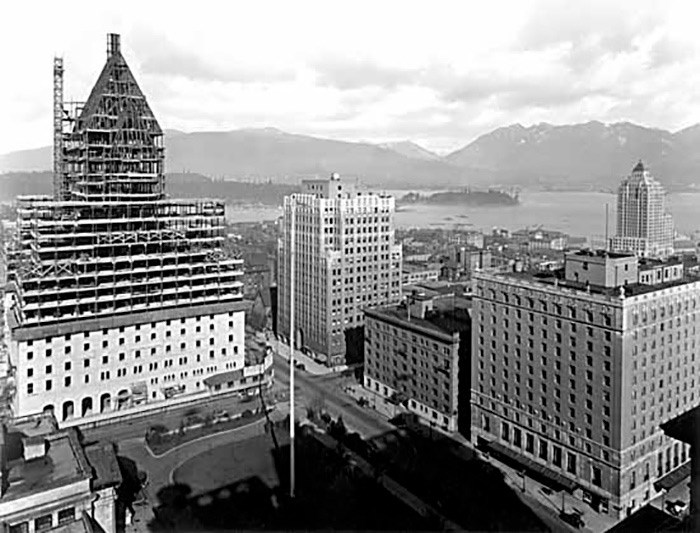 Hotel Vancouver II and III. Photo: Leonard Frank. VPL Number: 8909.
Hotel Vancouver II and III. Photo: Leonard Frank. VPL Number: 8909.
Canadian Northern negotiated a deal with the City to fill in part of False Creek in order to build a new railyard and train station. Canadian Northern agreed to construct a new hotel on the corner of Burrard and Georgia as part of the deal, but construction was delayed throughout 1928 - 1937 due to the war and great depression. The new hotel's steel frame stood over the city, unfinished for years.
5. The hotel was used as a barracks
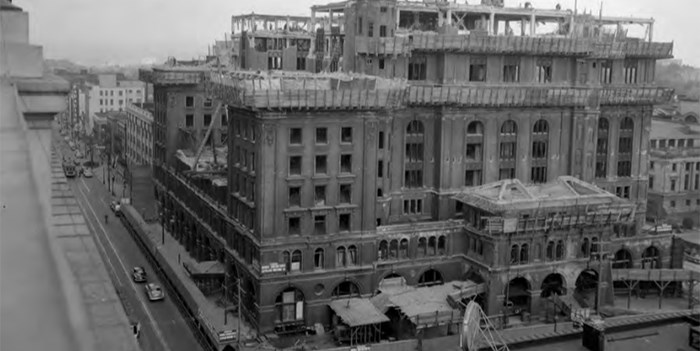 Photo: Vancouver Public Library item: VPL 42396.
Photo: Vancouver Public Library item: VPL 42396.
In its last years, the second Hotel Vancouver served as army barracks. The building was boarded up and placed under guard at the end of World War II, a time when returning veterans were having difficulty finding housing. In January 1946 thirty-five veterans took over the vacant hotel and claimed it as veterans housing. They organized themselves and soon were housing upwards of 1,000 veterans.


